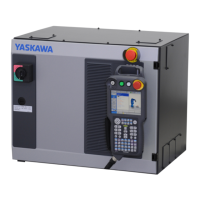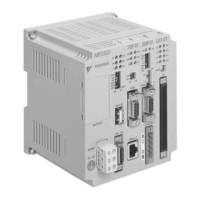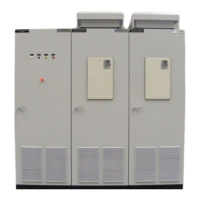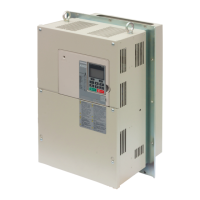5.1
FS
(1)
(a)
(b)
(c)
(cl)
(e)
(2)
(a)
(b)
31.7 Conditions of the Specifications to Perform
Editing
Conditions for the FS data to be stored in the
internal memory
FSMD is being output
It is during automatic operation (STL is
closed).
The execution values of the feedrate and
spindle speed are stored at the rise of the
FSMEM.
All the data stored in (3) are canceled at the
fallof the FSCM.
The maximum count of storage (count of the
FSMEM) is 128 times.
Conditions for the FS data to be reflected in
the part program
FSMD is being output.
Automatic operation is being held.
(Label
skip.)
When the FSCH turns open + close under the
above conditions, the FS data are inserted in
each block, according to the stored data.
Notes :
1.
2.
3.
4.
5.
6.
7.
8.
9.
10,
198
When the FSMEM is closed two or more times
in a single block,
the newer feedrate and
spindle speed become effective.
The FSMEM
count is not counted up.
When the FSMEM is closed in the subprogram,
the FS data are inserted in the subprogram
itself.
This needs special attention, as the
subprogram may also “be called from other
programs.
The FS editing of the multiple repetitive cycle
can be performed in the outer form rough
cutting cycle alone.
When the FSMEM is closed during constant
surface speed control, the F of the “closed”
block is changed but not the S.
The cycle start button is disabled while the
FSCH is closed.
The F and S data are stored if the FSMEM is
closed during cutting.
The S data are stored if the FSMEM is closed
during rapid feed.
Warning is given if the FSMEM is closed for
128 times or more.
No more data are stored
by closing the FSMEM.
Closing the FSCM during automatic operation
does n-etclose the
Cycle start cannot
FSMEh4 is closed.
F SMD-.
be enabled while the
11.
5.2
Warning occurs if editing is performed with
the FSMD closed, after the FS editing is
completed.
OPERATION PROCEDURE
5. 2.1 MANUAL RETURN TO REFERENCE POINr
With this function, the tool is returned to the
reference point manually. The procedure is as
follows.
(1)
(2)
(3)
(4)
(5)
(6)
Set
the mode select switch to RAPID or JOG.
Manually move the tool to a position some
distance away from the reference point.
When the tool is within the range A shown
below, it can be brought back to the refer-
ence point in the normal way, as described
below.
Turn on the REFERENCE POINT RETURN
switch,
Keep the JOG button for the return direc-
tion depressed.
The tool starts to move as
in the normal manual control, but the speed
is decelerated at the deceleration point, and
the motion stops automatically at the refer-
ence point.
Then, the REFERENCE POINT lamp for the
relevant axis lights.
After the second reference point return, the
operation will be the same as positioning.
Parameter #601 O (M ZRNHS) permits the same
operation as that when the power was first
turned on.
DECELERATION POINT
I
PATIO TRA\; ERSE RATE
\
::6280 = 626’ ]
ADp RGAc H spE~D ,
-i
----
IJl
ZERO PO IN’ SIGN
APEA A i ARE4 B
I
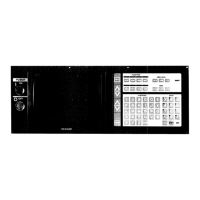
